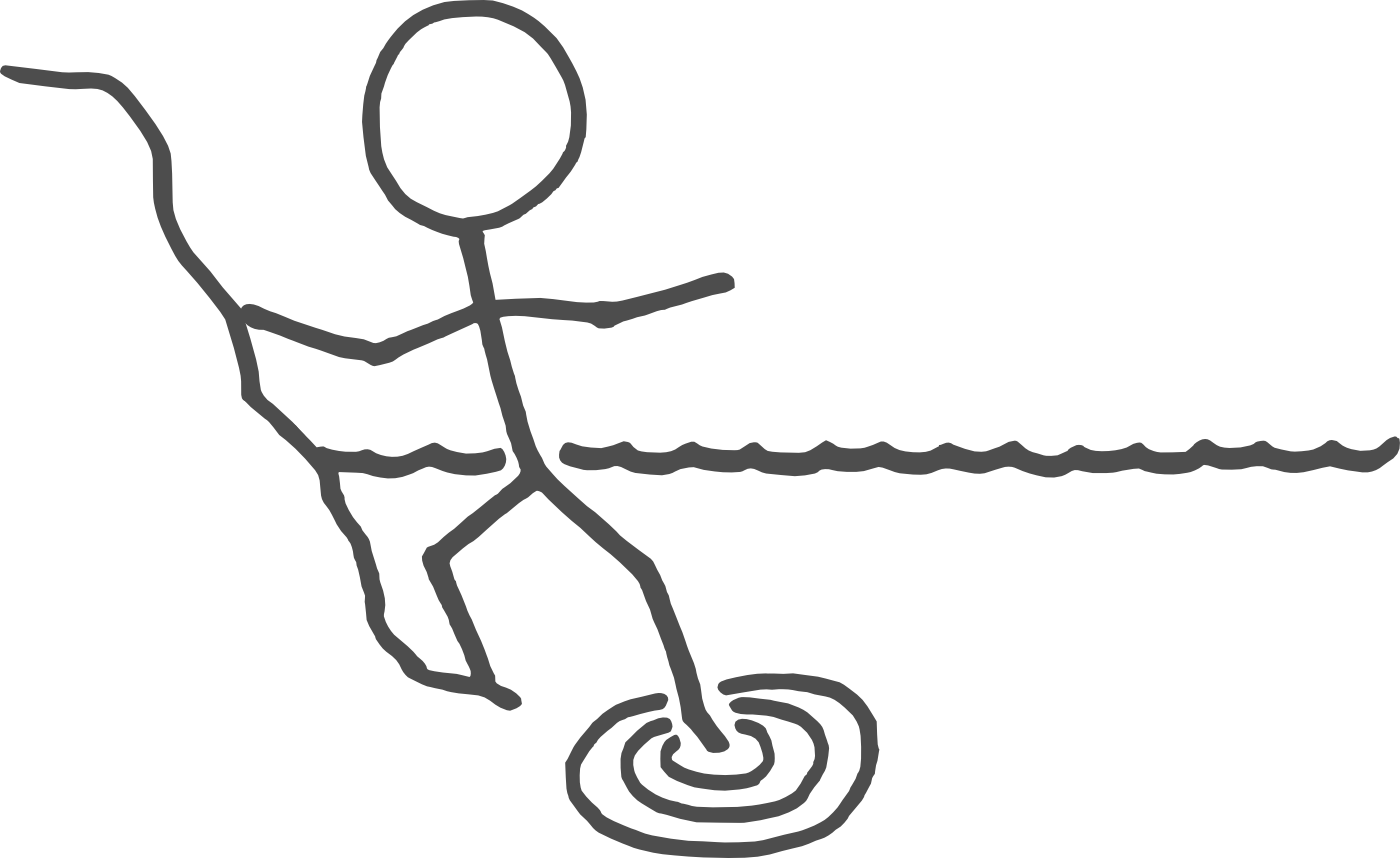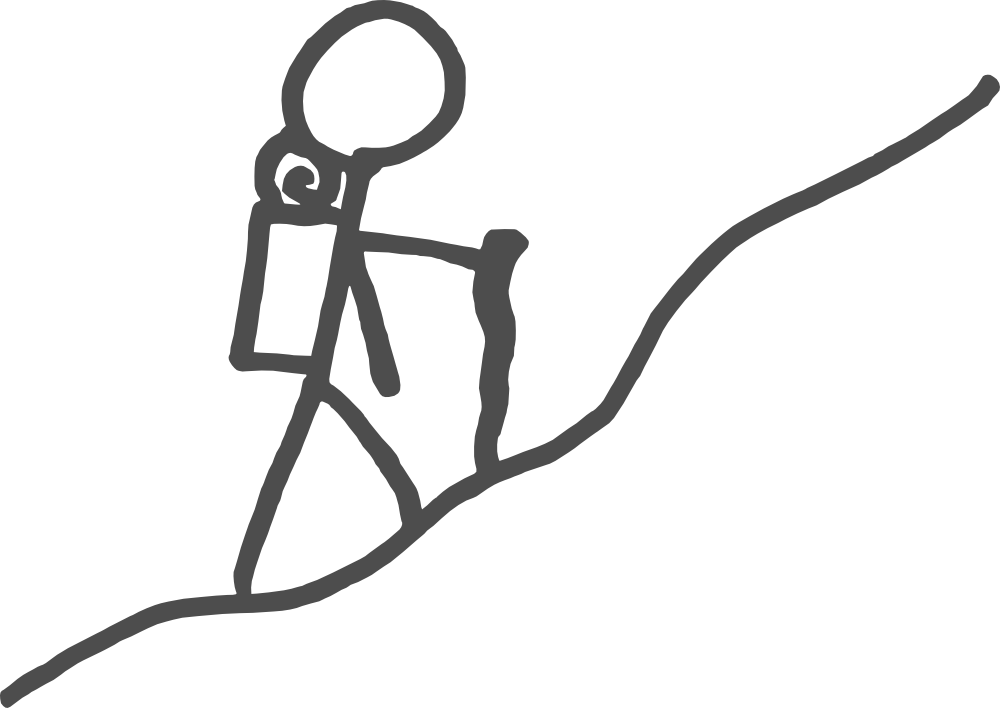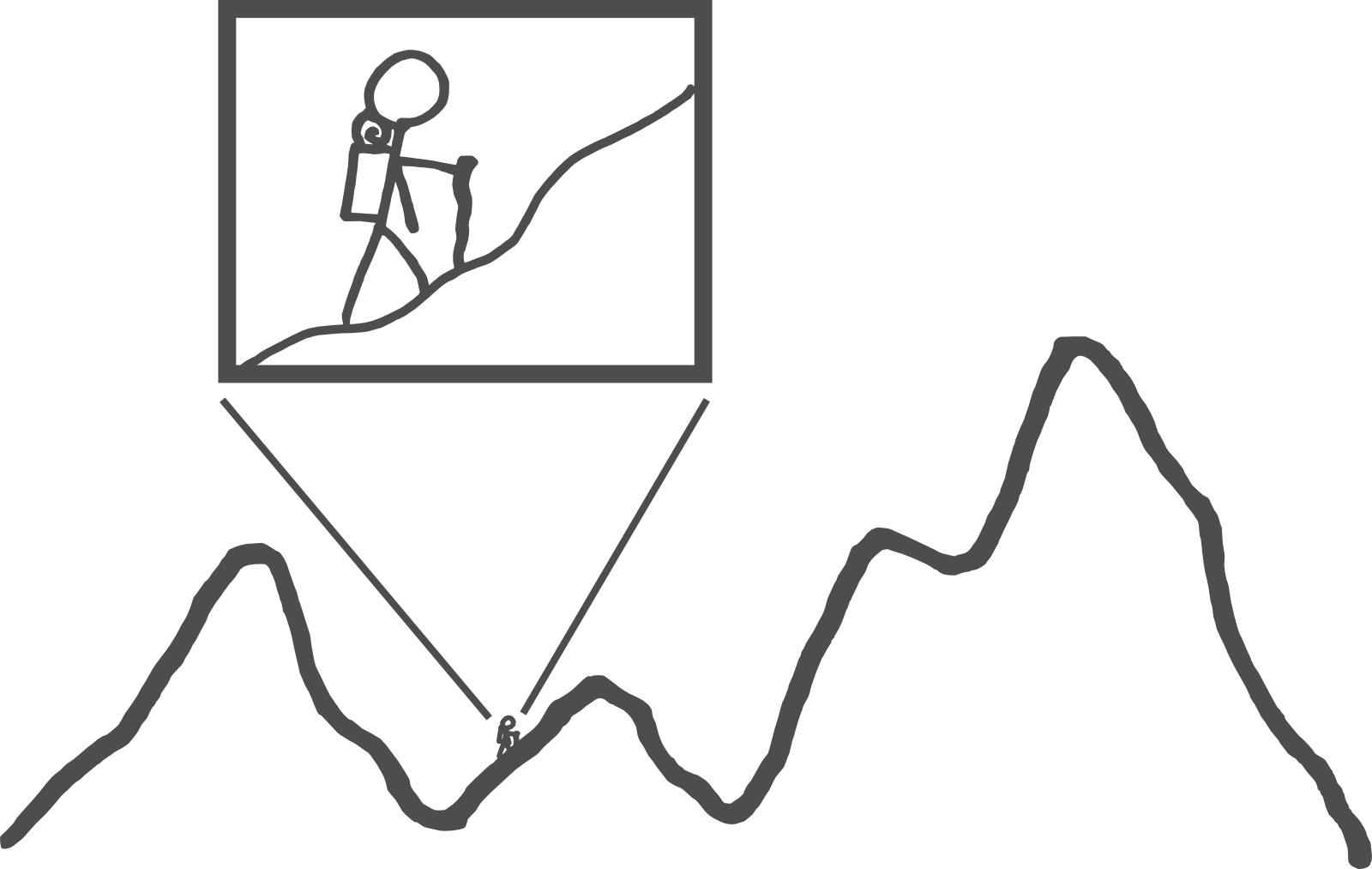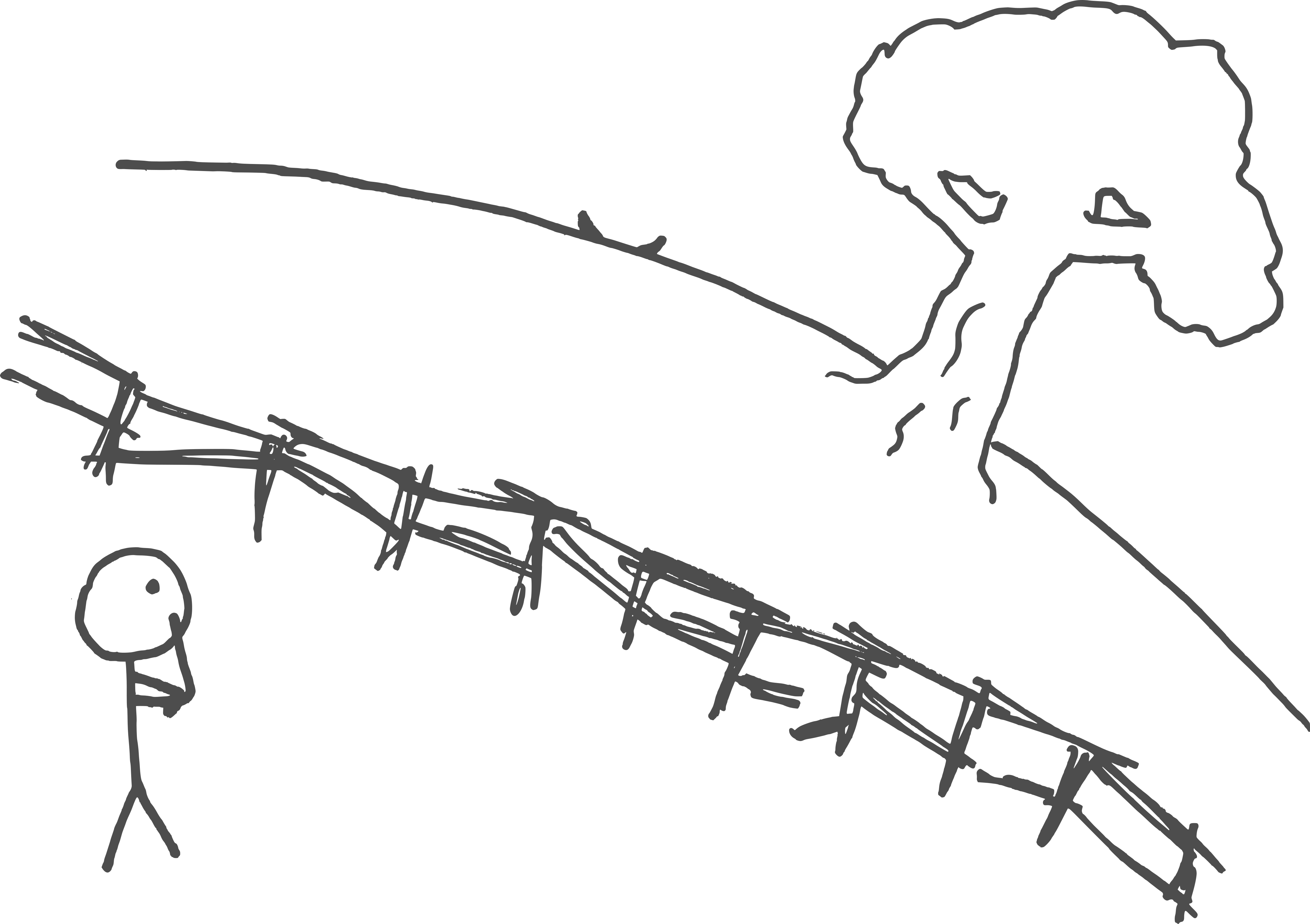Comfort Zone Exploration
post by CFAR!Duncan (CFAR 2017) · 2022-07-15T21:18:14.033Z · LW · GW · 2 commentsContents
The problem with progress The argument for CoZE Interlude: Chesterton's Fence The CoZE algorithm A model CoZE experience CoZE—Further Resources None 2 comments
Epistemic status: Mixed
The concepts which inspired the CoZE unit (such as exposure therapy and the explore/exploit problem in probability) are generally well-researched and under- stood. However, our combination of these concepts with an outlook of curiosity and epistemic uncertainty has changed their application somewhat. We have received promising feedback from alumni, but the activity continues to benefit from iteration.

The experience of comfort is in many ways a non-experience. It’s often easier to describe what it isn’t than what it is—it’s a lack of irritation, a lack of pain or discomfort, a lack of negative emotions like fear or anxiety or despair or defensiveness.
When we’re in our “comfort zone,” we feel calm, agentic, optimistic, and confident. Often, it’s a confidence born of experience—since most of us spend the majority of our time doing things that are comfortable, then the majority of the things we’re comfortable with will be things we’ve experienced many times, and are intimately familiar with.
Much of the time, things that lie outside of our comfort zone are out there for good reason. They’re things that cause us to anticipate danger, experience stress, and wrestle with uncertainty, and under many circumstances, it’s good to avoid danger, stress, and uncertainty.
But there’s a gray area between “definitely good” and “definitely bad”—between comfortable and uncomfortable. It’s an area characterized by mixed experiences and model uncertainty, filled with things we’re not sure about, or things we’ve struggled with, or things we’ve abandoned (or never dared to try). They’re outside of our comfort zone, but it’s not clear that they should be—it’s not clear whether they’re actually Things We Ought To Avoid.
The Comfort Zone Exploration technique (CoZE) is a method for gathering data about this gray area. It asks that we stretch our comfort zone, in small, safe experiments, a little bit at a time. The idea is to calibrate our discomfort, loosening up and letting go of unhelpful inhibitions while preserving those that are helpful, appropriate, and useful.
The problem with progress
There’s a classic dilemma in probability theory known as the explore/exploit problem. Roughly speaking, it highlights the tradeoff between spending resources on known goods, and spending resources in the search for new potential. You can think of it as the choice between joining a Fortune 500 company or founding a startup, or between working on a medium-term relationship or going back to dating (among many, many other operationalizations).
This problem applies to many aspects of a given person’s life. In general, most people like to improve, and are actively getting better at the things they do. Some people grow rapidly, and others slowly, but most of us are climbing the competence curve.

The (potential) problem is, with our limited range of vision, it’s often very hard to be confident that the particular hill we’re climbing is the highest one available. Even if we’re not seeking to maximize growth, there’s often a good chance that other paths could take us to similar heights faster or easier. The question is whether our efforts are taking us toward a global maximum, or merely a local one.

What makes this dilemma particularly thorny is that it only appears in places where, broadly speaking, it can’t be definitively solved. In other words, there is always going to be some degree of uncertainty, about whether your current path is the correct one. Even if you’re climbing the best hill you can currently see—even if you’ve just gained a bunch of new perspective and improved your map dramatically—there are always unknown unknowns and confounding counterfactuals.
If you imagine running a simulation of a thousand copies of yourself, or a spell that lets you go back in time and remake your decisions over and over again, it’s clear that more exploration is the way to go—radical progress comes more frequently from paradigm shifts and new frontiers than from diligent iteration, and given multiple tries, a strategy that maximizes exploration is much more likely to see high gains than one that sticks with known goods and just heads uphill from its arbitrary starting point.
But as individuals, we often don’t get the benefit of multiple tries or safety nets, and so exploration can come with significant risk. This is why more people go to college than found startups in their twenties, and why the vast majority of the people who are going to marry have already done so by the time they turn forty. There’s a strong bias toward conservative, safe strategies, which means there’s also a strong bias toward choosing the best of the known options fairly early and passing up on a lot of hypothetical good—especially when the known options do, in fact, pay off.
The argument for CoZE
One way to ameliorate the problem is the Try Things model—cheap, low-risk experiments that expose you to the potential for growth and new experiences, without destabilizing the good things you already have going.
Most of us have blocks and inhibitions that hold us back in some way or another, though, and, when presented with opportunities, often don’t actually feel that we have the affordance to take advantage of them. Furthermore, it’s often difficult to tell which blocks are useful (and are protecting us in meaningful ways) versus which are arbitrary (leftover, perhaps, from early experiences, or built on faulty assumptions about how the world works).
Consider some of the following search terms:
- What are things you think are good or acceptable to do, but which you find uncomfortable?
- What are things you enjoyed in the past, but don’t do anymore?
- What are things you see other people enjoying, but never try yourself?
- What are things people like you can’t do, or aren’t allowed to do?
- What are things you’re curious about, but for some reason have never actually explored?
- What are things you want to do, except that you think society more or less frowns upon them?
- What are things that are contrary to your identity or self-image, that you nevertheless sort of want to try?
- What are things you think that all humans should feel free to do, but you, personally, do not?
- What are things that [specific person very unlike you] does?
- What's something that went really wrong the one time you tried it, so you never tried it again?
- What's something you feel drawn to, but also afraid of?
. . . out of that list, there are no doubt some things you indeed genuinely ought not to do. But there are almost certainly a few that would make your life brighter, more vibrant, and more enjoyable, if there weren’t walls in the way.
One way to tell the two categories apart is with explicit reasoning, using your System 2. This is a large part of the aversion factoring technique—building a conscious model of your fears and hesitations, and deciding whether they’re useful or not.
But occasionally, reasoning fails to reach all the way down to our true hesitations. These sorts of inhibitions don’t really live in our System 2; they’re in our System 1—in our implicit, instinctive model of how-the-world-works. Because of that, it’s unwise to do too much with our “manual override.” We can often talk ourselves into taking actions that are destructive or dangerous, or convince ourselves that we’ve overcome our inhibitions only to discover, mid-dive, that we’re out of our depth and deeply uncomfortable.
What we need, then, is a System 1 intervention—something that will work with our reflexive, emotional brain, that can both learn from our inhibitions and also talk to them, allowing for updates to flow in both directions. This is the other side of the aversion factoring coin, the place where thought meets action and theory meets reality—since our System 1 learns best from experience, that’s what we want to give it, with gentle support.
Interlude: Chesterton's Fence
Imagine that you have inherited a large and beautiful farm from a distant relative. You are visiting the farm for the first time, enjoying the peaceful atmosphere and the idyllic views.
However, halfway through your tour, you come across an ugly, dilapidated wooden fence, cutting right across the center of a lovely meadow and basically ruining its aesthetics entirely. You begin tearing it down on the spot—only to be gored by the bull who was lurking just over the hillside.

This parable, popularized by philosopher G.K. Chesterton, is meant to demonstrate a fairly straightforward lesson: if you find some barrier erected somewhere, do not demolish it until you fully understand the reasons why it was built in the first place.
This is a conservative mindset (conservative with a lowercase "c," not the cultural Conservative of various political groups). It's a reminder that the accumulated wisdom of the ages contains, well, wisdom. It's not the case that every fence ever erected still needs to be there, but it is the case that most of the fences were put there for some reason, and thus getting rid of them without ensuring you can handle the preexisting problem is unwise.
Chesterton's Fence is what makes the difference between CoZE and exposure therapy. CoZE includes the lesson of Chesterton's Fence, whereas exposure therapy is simply a tool.
Early iterations of the CoZE class did not include Chesterton's Fence, and were in fact labeled Comfort Zone Expansion. The underlying assumption was that of course our comfort zone was too small, and ought to be expanded!
Those early versions leaned heavily on exposure therapy (also called desensitization)—a process by which gradually-more-intense exposures to a given phenomenon help patients reduce their anxiety surrounding that phenomenon.
The problem is that this is a symmetrical technique—it works regardless of whether it's a good idea. Proponents of exposure therapy have bragged and shown off examples of e.g. former germaphobes who are now willing to lick public toilet seats in subway stations (!). This seems, to us, to be a failure of rationality—some aversions are good and correct to have!
Comfort zone expansion begins with a blunt assertion that some particular fence or boundary is unnecessary or misplaced, and ends with the removal of that boundary. In practice, we've found that this initial assertion is very hard to make correctly, and that people often use desensitization to push themselves into new modes of behavior that they later regret. The fence was there for a reason.
The switch from comfort zone expansion to comfort zone exploration is the inclusion of genuine humility and uncertainty. It could be the case that one's metaphorical fence—one's discomfort with a given action or way-of-being—is in the wrong place. It could be that the fence ought not be there at all. It could be that the fence ought be pushed farther out.
But it could also be that the fence is exactly where it needs to be, or even that it ought be drawn inward. CoZE asks that, as you walk up to your fences, and play around with the territory on either side, dipping your toes into the space just beyond, you remain alert and attentive and receptive. The idea is to gather experiential data, and then to make decisions about any potential fence alterations later, at your leisure and without pressure or preconception.
Because of its neutral stance, CoZE has the potential to be a much stronger, more robust, and epistemically sound technique than standard exposure therapies. By holding open the question of whether or not a given aversion is appropriate, and allowing both System 1 and System 2 to weigh in, CoZE allows us to bring all of our cognitive resources to bear, and to end in a place of internal agreement rather than internal override. We posit that this is both more effective and also more true to our underlying goal of acting on true beliefs rather than assumptions.
The CoZE algorithm
1. Choose an experience that you’d like to explore
- Something that’s outside of the set of things you usually do
- Something you normally feel somewhat blocked from doing
- Something you think could be a positive or freeing or enjoyable new experience—something with a yum factor
2. Prepare to accept all worlds
- Concretely visualize a future in which you still do not partake of this particular experience, and trust that if you choose this world, it’s because you have good reasons not to.
- Concretely visualize a future in which you feel free to partake of this particular experience, and trust that if you choose this world, it’s because it’s a world in which that’s okay.
- Make sure that both worlds feel comfortable and possible. If they don’t, stop; you’re not properly oriented for CoZE.
3. Devise an experiment
- Think of a small, safe way to engage with the experience—something that will allow you to “taste” it without locking you into anything or throwing you off-balance.
4. Actually try it
- Check whether your experiment requires the help of other people or the creation of a special space.
- Pay close attention to your internal experience—how are you reacting? What’s going on with your body and your emotions?
- Pay close attention to external reality—what’s happening, as a result? What are the consequences of your actions and experiences?
5. Digest the experience
- Find a space to rest and relax, whether physical, mental, or both.
- Notice your feelings, and compare them to your original model of what this experience would mean or be like.
- Decide whether to continue/try again, or stop, taking extra care to ensure that you aren’t forcing yourself into anything.
- Avoid overthinking—this is System 1’s game, not System 2’s.
A model CoZE experience
Alex notices that she feels uneasy with being assertive. She suspects that being more assertive would help with some goals, and hurt with others—she’s not sure whether it would be net positive or net negative, and she notices that her discomfort gets in the way of thinking clearly about it. So she decides to try some comfort zone exploration.
She starts by imagining a future (after using CoZE) in which she’s still not particularly assertive—she still avoids speaking up in meetings and conversations, and occasionally swallows her dissatisfaction so others can get what they want. She focuses on her trust in her own System 1—that if, after trying it out, her System 1 still leans away from assertiveness, it means that being more passive really is a good strategy for balancing all of her goals. She decides that this world is a good world to live in, and that this version of herself is a good version to be.
Then she imagines a future where she speaks up more, and stands her ground with confidence. That seems a little scary—after all, she’s never done things that way before—but she realizes that she’s not choosing that future. It will only come to pass if her System 1 decides that it’s safe and comfortable. Under those circumstances, it’s easy to imagine—because she wouldn’t be doing it if it weren’t a good strategy for achieving her goals. She decides that that world and that version of herself are also good.
She moves on to imagining various ways she might “try out” the experience of assertiveness. After a little brainstorming, she settles on the act of walking straight ahead into a group of people going the other way. Normally, she looks down and avoids people, and in her head it’s the same feeling as not speaking her mind in a conversation, so testing one should give her at least some data on the other. She checks her inner sim to see if this seems dangerous, and decides that the worst possible outcomes are bumping into someone and someone getting upset at her for being pushy. Both of those seem unpleasant, but not really dangerous, so she decides to proceed.
She goes to her local mall to run the experiment. As she prepares to start, she notices feelings of nervousness and hesitation, and finds herself coming up with reasons to wait a little longer before starting. She lets those run their course, finally jumping in to try it and feeling her heart rate accelerate as she walks toward a crowd of people—
—and at the last second, she veers off.
Having given it an honest shot, she pauses to get a sense of her current emotional state. She notices some embarrassment at having “failed” to execute her intended plan, and decides to try again, since she hasn’t quite gotten to explore the experience she set out to get. She briefly checks to see whether she’s forcing herself into it, and notices a small amount of discomfort with the idea—but the discomfort is more like a sore muscle than a strained one. It doesn’t feel like a betrayal or a violation to try again.

So she does, continuing to focus on both her internal experience and also the external consequences of her actions. After a few tries, she notices that people simply move out of her way, usually without any kind of negative reaction. This feels exciting, new, and strange. On her sixth run, she notices that she’s starting to feel both tired and slightly bored, so she does one last pause to reassess and then ends the experiment. Afterward, she grabs a sandwich from her favorite restaurant, and deliberately holds off from “deciding” whether to be more or less assertive in the future, trusting her System 1 to make any appropriate updates.
CoZE—Further Resources
CoZE draws inspiration from the explore/exploit tradeoff puzzle—when each additional action costs you time, money, or other resources, should you use your next action to use what you already know works (exploitation), or should you try out new strategies to find a possibly better approach (exploration)? In practice, CFAR finds that people tend to lean too quickly and heavily on exploitation, and CoZE is intended to encourage more exploration.
The “multi-armed bandit” problem, a mathematical expression of this puzzle in probability theory: https://en.wikipedia.org/wiki/Multi-armed_bandit
Social acceptance is a basic human need; being rejected or excluded produces an unpleasant experience similar to physical pain (Williams & Nida, 2011). Even rejection from strangers can be painful; many social exclusion studies use a simple computer game (which mimics playing catch) played with two other people who are not present.
A review of research on social exclusion and rejection:
Williams, K. D., & Nida, S. A. (2011). Ostracism: Consequences and Coping. Current Directions in Psychological Science, 20, 71-75. http://goo.gl/vuGLD
Many times the reason we find something uncomfortable is simply because we’ve happened to not do it much in the past. This can create a kind of metaphorical momentum in our choices and the ways in which we view our- selves. By the same token, just trying those things can challenge those static views of ourselves and our options. Robert Cialdini’s research on the psychology of persuasion suggests consistency/commitment effects, in which someone becomes more likely to behave according to a role or attribute once they start behaving that way.
Cialdini, R. (1993) Influence: The Psychology of Persuasion. New York: Morrow. http://goo.gl/eyvTvJ
Cialdini on consistency/commitment effects: https://goo.gl/vyBdLn
Leon Festinger introduced the theory of cognitive dissonance, which states that people tend to experience discomfort from conflicts between different beliefs, ideas, and/or values, and therefore try to resolve them. In many cases
Festinger observed people prioritizing internal consistency over accuracy in their beliefs. In his most popular book, he explores the psychology involved when a doomsday cult’s predicted end of the world didn’t happen at the specified time. In response, the members became even more dedicated, the standard explanation being that they found it easier to relieve dissonance by rationalizing why the end never came than it would have been to acknowledge that their past extreme actions had been in error.
Festinger, L. (1956) When Prophecy Fails. Minneapolis: University of Minnesota Press. http://goo.gl/oOwykk
Conditioning can be used to overcome one’s fears or aversions. One technique, called exposure therapy, involves repeated exposure to the aversive thing, with gradually increasing intensities matching the natural ebb of anxiety as the thing becomes more familiar. This process has proven effective at reducing aversions even for people with clinical phobias and anxiety disorders (e.g., Norton & Price, 2007).
http://en.wikipedia.org/wiki/Exposure_therapy
A review of research on exposure therapy, focusing on why it is effective: Hoffman, S. G. (2008). Cognitive processes during fear acquisition and extinction in animals and humans. Clinical Psychology Review, 28, 199-210. http://goo.gl/xKcnt
An object’s (or environment’s) affordances for a person are the set of actions that the person readily perceives as possible. A person’s social comfort zone can be considered to be defined by the social affordances that they perceive.
http://en.wikipedia.org/wiki/Affordance
In his 2009 essay “Keep Your Identity Small,” Paul Graham warns that identifying as an X (or an opponent of Y) makes it difficult to think clearly or have a productive discussion about X or Y. Identity may also narrow one’s affordances; for example, identifying as a person who can figure things out on their own may prevent a person from noticing options that involve asking someone else for help.
http://www.paulgraham.com/identity.html
2 comments
Comments sorted by top scores.
comment by Leon Lang (leon-lang) · 2023-01-27T19:38:44.736Z · LW(p) · GW(p)
Note: I found this article in particular a bit hard to summarize, especially the section "The argument for CoZE". I find it hard to say what exactly it is telling me, and how it relates to the later sections.
Summary
- Comfort is a lack of pain, discomfort, negative emotions, fear, and anxiety, …
- Comfort often comes from experience
- There’s a gray area between comfort and discomfort that can be worth exploring
- Explore/Exploit Tradeoff:
- Should you exploit the current hill and climb higher there, or search for a new one?
- Problem: there is inherent uncertainty
- Exploration is risky for individuals; there is a strong bias toward known paths
- Argument for CoZE
- Try Things model — cheap, non-destabilizing experiments
- The text contains a list of questions that can generate a lot of the “things we might try”.
- Problem: We might be uncomfortable with them.
- How do we reason through them but also bring System 1 on board, which might have useful insights?
- Chesterton’s Fence
- In the story, someone destroys an ugly fence, only to then be attacked by an animal behind.
- Don’t destroy a barrier before you know exactly why it’s there.
- CoZE includes the lessons of Chesterton’s fence
- That’s why it’s called exploration instead of expansion
- This is the difference to exposure therapy
- When exploring the area around the fence, remain alert, attentive, receptive:
- Stay open to all outcomes: the fence shouldn’t be there, the fence is exactly where it should be, the fence should be further away or even closer to you…
- In the story, someone destroys an ugly fence, only to then be attacked by an animal behind.
- CoZE Algorithm:
- Choose an experience to explore (outside of the current action space, or somewhat blocked, maybe with a yum factor)
- Prepare to accept all worlds: both possibilities need to feel comfortable in your imagination
- Devise an experiment to “taste” the experience
- Try the experiment (Potentially with help of others)
- How do the body and mind react?
- How does the external world respond?
- Digest the experience
- Compare the experience to expectations
- Should you continue trying something like this? Do not force yourself
- Give your system 1 space
comment by Quiche Eater (John Dunbar) · 2023-03-19T23:58:00.212Z · LW(p) · GW(p)
it’s clear that more exploration is the way to go
I think there is nuance here. https://mindingourway.com/dive-in-2/ offers a good alternative perspective.